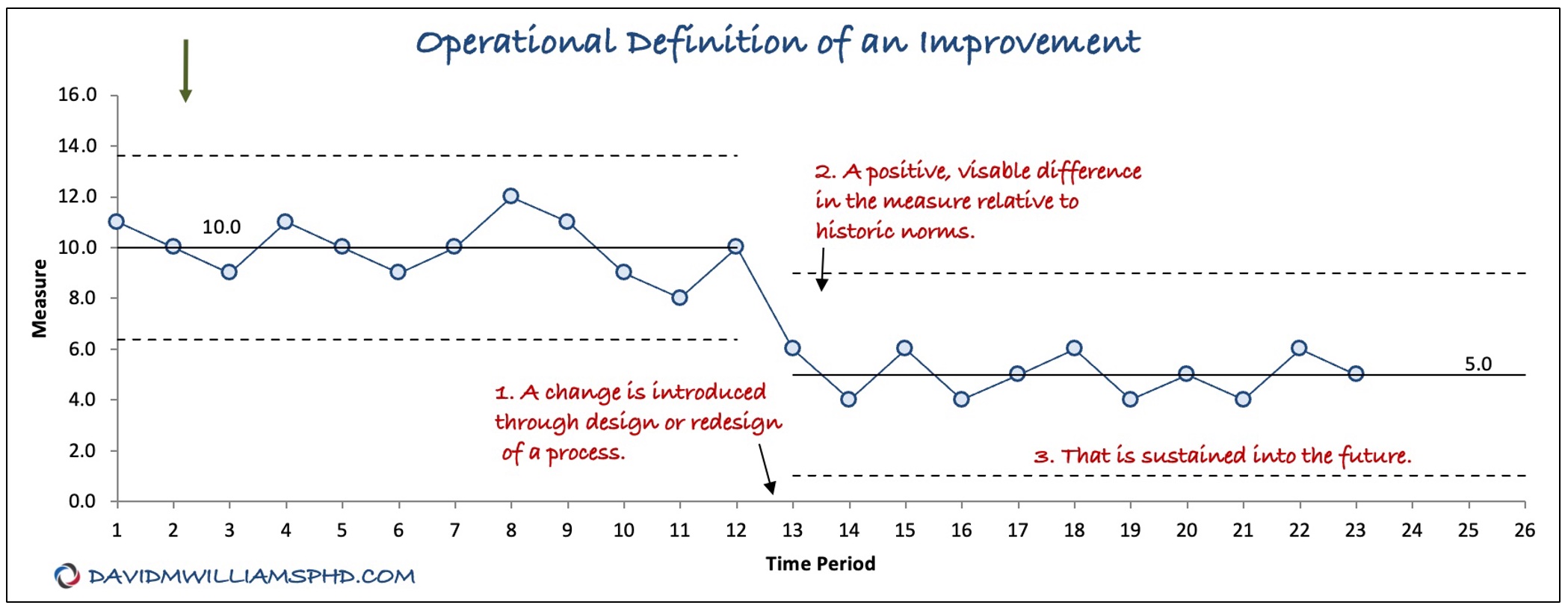
“What is YOUR definition of ‘improvement’?” she asked. The leadership team just finished reviewing the improvement efforts from last year. Teams summarized their projects and shared reflections on key learnings and barriers. The team worked together all year, and their investment of time, energy, and desire was evident. Enthusiasm was high, and leaders celebrated it.
It was only when the leaders returned to the agenda that they struggled. Their objective was to review the chartered improvement efforts. “Did we get the results we set out to achieve?” The leaders talked for some time about the question. Several leaders were passionate the teams made great improvements. They committed time, participated in many activities, and learned a ton. Their stories were great. Other leaders noted reports with little or no data and only a few with visual displays of the data. It was here that she turned to me and asked, “What is YOUR definition of ‘improvement’?
A simple question. Many people do not have a shared operational definition of “Improvement.” Leaders have found this definition to be useful.
Fundamental changes that result in improvement are:
- A change that alters how work or activity is done
- Produces a visible, positive difference in results (relative to historical norms)
- It is sustained into the future
The Shewhart chart reflects how this looks with data displayed over time.
Your ability to improve processes, products, and services is essential to adopting Quality as an Organizational Strategy (QOS).
—
Connect with me on social media. Sign up here to receive a monthly email that includes all my blog posts and Improvement Science resources I think you’d appreciate.
*Definition adapted from Langley, Gerald J., Ronald D. Moen, Kevin M. Nolan, Thomas W. Nolan, Clifford L. Norman, and Lloyd P. Provost. The Improvement Guide: A Practical Approach to Enhancing Organizational Performance. 2nd Edition. San Francisco: Jossey-Bass, 2009. P. 16. The figure is adapted from Lloyd Provost.
